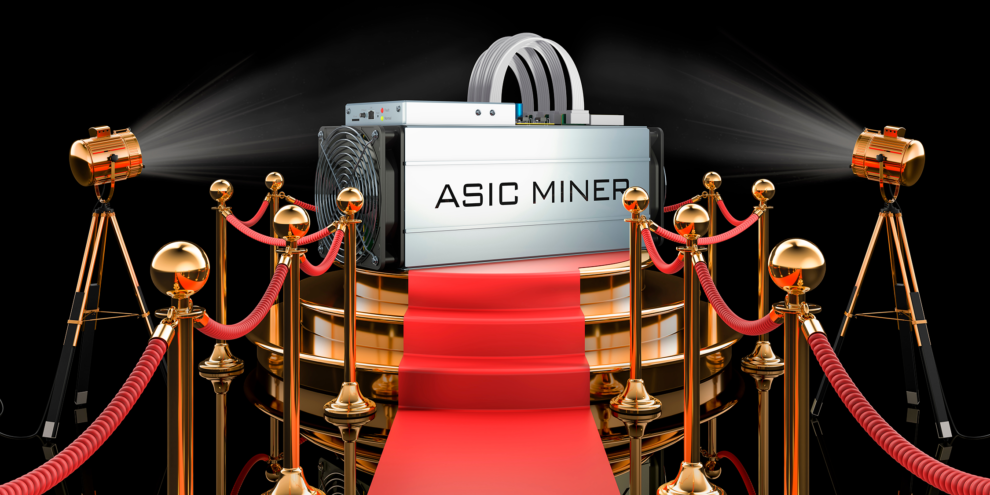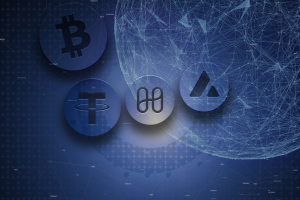What is Cryptocurrency Mining?
Cryptocurrency mining is the process of generating and verifying cryptocurrency transactions, or the process of creating new digital coins. In order to mine cryptocurrency, miners must run specialized software on powerful computers. The software is needed to solve complex puzzles and find new blocks on the blockchain. Once a new block is found, miners are rewarded with a certain amount of cryptocurrency.
There are many different cryptocurrencies that can be mined, each with a different mining process and reward. For example, Bitcoin mining requires a powerful computer and specialized software. However, mining Ethereum requires a graphics card and specific software. Mining rewards can vary, depending on the cryptocurrency being mined. Bitcoin miners receive a set amount of Bitcoin for each block they successfully mine, while Ethereum miners receive a reward of Ether, Ethereum’s native token.
The most common way to mine cryptocurrency is through the use of ASIC miners. ASICs, or Application Specific Integrated Circuits, are powerful computers designed specifically for mining cryptocurrency. ASICs are designed to be more efficient and powerful than traditional computers, and are thus able to mine cryptocurrency faster.
However, there are other ways to mine cryptocurrency. GPUs, or Graphics Processing Units, are powerful graphics cards that can be used to mine cryptocurrency. GPUs are less powerful than ASICs, but still provide an effective way to mine cryptocurrency.
Finally, cloud mining is another way to mine cryptocurrency. With cloud mining, miners are able to rent computing power from a cloud-based service, allowing them to mine cryptocurrency without having to buy or maintain their own hardware.
Cryptocurrency mining is an integral part of the cryptocurrency ecosystem, and is a great way to earn digital currency. With the right hardware and software, anyone can become a cryptocurrency miner.
Mine Ethereum With Your Norton Antivirus
Ethereum is a decentralized platform that runs smart contracts on a blockchain. It is an open-source platform that enables developers to create and deploy applications that run on the Ethereum Virtual Machine (EVM). Mining is the process of verifying transactions on the Ethereum network and rewarding miners with Ether, the native cryptocurrency of the Ethereum network.
In case you aren’t familiar with Norton Antivirus, it is a well-known security software provider. They recently released an update to their software that allows users to mine Ethereum with their computers. This is a great option for those who want to get started with mining, but don’t want to invest in expensive hardware. All you need to do is download and install Norton Antivirus and then configure it to mine Ethereum.
When mining Ethereum with Norton Antivirus, you will be using your computer’s CPU and GPU to verify transactions on the Ethereum network and receive rewards in Ether. This process is known as “Proof of Work”, and it requires a lot of computing power. The more computing power you have, the more rewards you will receive. However, it is important to note that mining Ethereum with Norton Antivirus is not the most efficient way to mine Ethereum.
Norton Antivirus is a great option for those who want to get started with mining Ethereum without investing in expensive hardware or software. It is important to remember that mining Ethereum with Norton Antivirus is not the most efficient way to mine, but it is a great way to get involved in the cryptocurrency space.
Other Cryptocurrencies That can be Mined
- Litecoin,
- Ravencoin,
- Dodgecoin,
- Vertcoin,
- Monero,
- Haven Protocol,
- Ethereum Classic (ETC),
- Zcash.
This is a list of cryptocurrencies that you can mine via the use of a GPU or ASICs Miner. This is not the only way to mine cryptocurrencies, however. There are alternative methods, which I would say are for more confident or advanced cryptocurrency enthusiasts. Near enough any cryptocurrency can be mined. Most currencies are not as easy to mine as running a program on your computer and letting the program do all the work for you though. Which brings me onto the next part of this post.
Alternative methods of Mining
Don’t get me wrong, it is still somewhat easy to mine other cryptocurrencies, but you need to be confident to try these methods.
The alternative methods of mining cryptocurrencies are more risky because you have to have liquidity to be able to provide in order to earn more crypto assets. These alternative methods are:
- Staking
- Providing Liquidity
- Farming
Staking is easy. You simply add your single crypto asset to the network and this earns you new coins at the rate of whatever APR they are offering. If you would like to mine crypto by either farming or providing liquidity however, it is a little bit more complicated. What you are doing is adding another cryptocurrency to an existing one. For example, you could have FTM/ETH as a pair. If you are purchasing Ethereum on the FTM network, it would likely be WETH (Wrapped Ethereum), however. That would make the pair FTM/WETH.
So for the sake of this example lets just say you are going to be adding liquidity to the FTM network and you see a pair FTM/ETH. So you create an FTM/ETH liquidity pool token and you add it to the Liquidity pool. Essentially, what you are doing by doing this is taking liquidity from one network and putting into another. This helps to keep the network more stable. And by doing this, you get rewarded with whatever APR the network is offering.
FTM is only an example. If you look on any other blockchain, you will notice that they have a way to earn their native crypto asset. There’s normally a link which says earn. If you click on that. You will get an option to stake, provide liquidity or farm. If you click on provide liquidity or farm, you will see a list of pairs that the network currently supports. I will tell you how you can search for liquidity pools and farms in the next part of this post.
How to Look for Liquidity Pools to Mine From
I used FTM as an example. However, lets say you want to mine AVAX on the AVALANCHE blockchain. How would you go about doing that?
- First of all, you need to add AVALANCHE to your wallet and connect your wallet to the AVALANCHE blockchain.
- If you are using Metamask on a mobile device, (which is what I recommend) open the browser in your wallet.
- Search for TraderJoe in the search Engine.
- The top result should give you TraderJoexyz.com decentralized exchange. Now click on that link.
- Once TraderJoe has opened, you are able to connect your AVALANCHE network to TraderJoe.
- Now you have a few options. You can Trade, Farm, Stake or provide Liquidity. Whether you Stake your AVAX or Farm or provide liquidity, you will be rewarded, so all these methods are considered as mining.
Adding Liquidity to a Liquidity Pool or Farm.
In order to provide liquidity or Farm, (because the process is practically the same) you first have to create a LP (Liquidity pool) token. So I will walk you through it step-by-step, just as I did previously.
First of all both pairs have to have the same value. So what you need to do before you can provide liquidity is trade your existing asset for 50% of the total value to the asset you want to provide liquidity to. So say you want to add an LP token to the AVAX/USDC pool, what you need to do is convert 50% of your AVAX to USDC. You can do this by going to trade. If you have AVAX you want to convert, then you put AVAX as your entry in the top dropdown box. In the dropdown box below, you need to put the other crypto asset in, which is USDC. It’s the same for any LP you want to. So if you are choosing to add liquidity to AVAX/ETH. The the bottom entry should be ETH.
Now if you work out what 50% of your AVAX is, type that amount into the box for AVAX. Now press swap. This will trade your AVAX for USDC. Now you can create a LP token. So first of all, go back to TraderJoe’s homepage. Now these steps:
Steps to Add Liquidity to a Liquidity Pool
- Click on Providing Liquidity. Here you will see all the Liquidity Pools Available to mine from. (Each has it’s own APR)
- Scroll down to the bottom. Here you will be given an option to create you LP token.
- Click on Add Liquidity.
- Now you you can add both currencies to the LP token. So put the amount of AVAX in the top box. This will present you with the equal value of USDC in the bottom. Now you convert them both to a LP token.
- Now you have an LP token, you can add it to The Liquidity pool for that pair. and start earning your rewards.
- Trader Joe is a little bit more complicated as they’ve now added a few additional features to their Liquidity pools. So I recommend reading their support page on Liquidity Strategies before diving into their pools.
Creating LP tokens and adding them to a Liquidity Pool is the same on all Networks. You will create your pool tokens the same way on Spookyswap on FTM as you would on TraderJoexyz.
A list of Cryptocurrency Networks where you can find Liquidity Pools and Farms.
- (FTM) Fantom – Spookyswap.io
- (AVAX) Avalanche – TraderJoexyz.com
- (DFK) DFKChain – Defikingdoms.com
- (BSC) Binance Smart Chain – Pancakeswap.fnance
- (SUSHI) Cross-chain compatible – Sushi.com
- (UNI) Uniswap – Uniswap.org
- (1Inch) Cross-chain compatible – app.1inch.io
- (PSP) Cross-chain compatible – app.paraswap.io
- (Osmo) Osmosis – https://app.osmosis.zone/
This is just a short list of dex exchanges. There are many more. If you take a look at a few of them however, you will see they all have very similar features.












